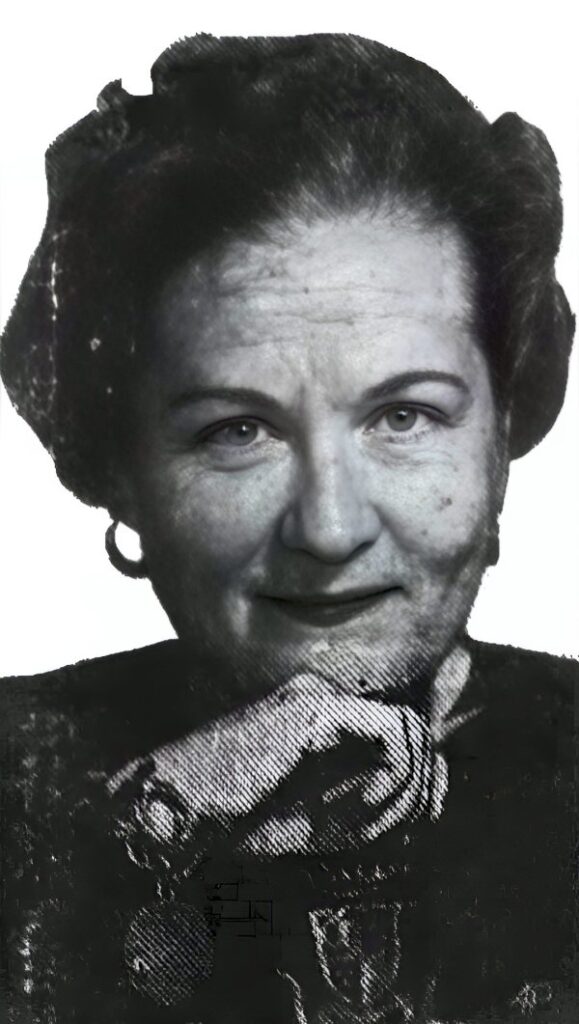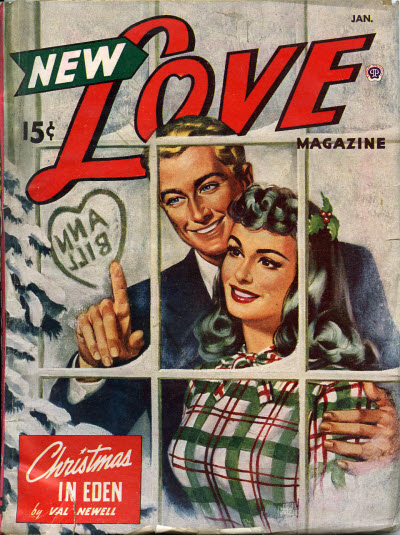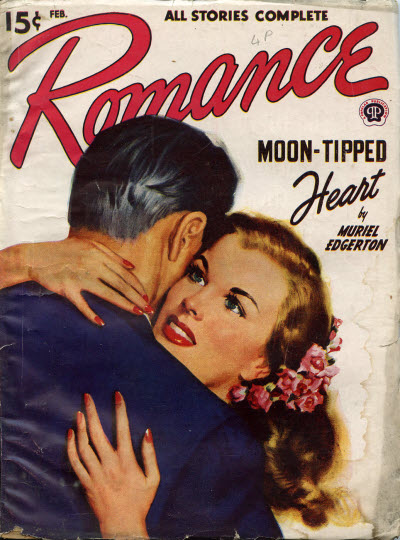A rare media article about a love pulp editor.

By Cynthia Lowry
New York, Jan. 22. (AP) Everything’s love, love, love to Peggy Graves and in a nice way, of course, it’s strictly business. Mrs. Graves is the editor of two pulp magazines devoted to turning out each month 14 stories of love and romance, hand-tailored to meet the vicarious requirements of a large segment of American womanhood. The editor, happily married for 20 years, maintains that her business life is a wonderful adventure. The girls are the ones that keep her presses running; the men buy pulps built around cowboys, detectives and sports heroes.
The magazine business is divided into two fields: the slicks and the pulps. Slicks are printed on glossy, expensive paper and have a reputation of paying more for stories and are supposed to attract a more sophisticated reader. Pulp magazines printed on coarse paper which can also be used for blotting—used to have a rather crummy reputation. They’ve cleaned house, upped rates, produced better stuff and nowadays most people don’t hide them in their copy of the evening paper.
The readers of Mrs. Graves’ “New Love” and “Romance” magazines have given pretty good indications of what they like in the way of heart interest and Mrs. Graves works long hours to oblige.


Have to Have ‘Rules’
“It’s the same old formula,” she said, sitting up straight so she could see her visitor over a pile of “slush” manuscripts she was about to reject. “Boy meets girl, boy loses girl, boy gets girl. But it goes much farther than that and we’ve got rules.
“You can’t fool your reader. She wants to be on the inside track about what’s going on. Black is evil and white is good; the hero and heroine are pure and the menace, male or female, is bad.”
Mrs. Graves, who is an attractive blonde, toyed with a pencil, as she assembled some of the other requirements for the stories she uses (4.500 to 15,000 words).
The heroine is never, never permitted to get drunk and even sipping a dry sherry is frowned upon. The hero can sip spirits frumenti but he can’t toss off a straight drink. Unmarried couples are under no conditions permitted to be alone in a bedroom, even if they’ve only gone back to get a pair of gloves.
“Bad girls can make a play for the hero—who never falls for it —but good girls are forthright, naive, honorable and all the rest of it. The heroine, of course, is never seduced.”
“There’s always a happy ending,” she said thoughtfully, “and, of course, good always prevails. The right people walk off into the sunset to live happily ever after.”
The girls are not permitted to swear because they are always American ladles, and the boys never get any farther in profanity than an occasional “damn” or “hell,” and then only under supreme provocation.
Light corporal punishment, provided it’s done in a humorous way, is permitted. The hero, for example, might laughingly spank the heroine.
Love Is a ‘Serious Business’
“But,” cautioned Mrs. Graves, “we don’t go in much for humor. Love Is a very serious business.”
She keeps a weather eye on fads in names and sometimes changes the name of a heroine to give it a popular sound. Right now she thinks such names as Shelley, Robin, Mev (yes, Mev) and Cynthia are good.
“But we sometimes throw in one like Mary for a change,” she says.
She had a sizable crew of writers who turn out a steady stream of glib, formula stories and make a very good living at it. Most of them are housewives who beat a typewriter in their spare time at a rate of one cent a word and upwards, mostly upwards. Mrs. Graves’ own secretary, Irma Ginsburg, spends her week ends punching out tales of romance which are published under the name of Diane Austin.
Can’t Compete with Real Thing
In the salad days of the twin magazines, “Romance” carried the subtitle of “The Best in Love Fiction.” That was because the title name was a little effete and it was feared the average reader wouldn’t understand what it meant. Nowadays, however, the publisher believes everybody knows what romance is.
During the war years, when the boys were away from home there was a tremendous increase in sales. Then, with the return to civilian life, sales settled bad more toward normal.
“The magazines couldn’t compete with the real thing,” Mrs. Graves explained, “although they filled a gap when the boys were away at war.”
Mrs Graves just about sums up the reasons why I don’t collect the romance pulps. The love story formula is a killer and makes the stories unreadable.
But there are still some books about the love pulps that are worth reading: Love Story Editor by Daisy Bacon and Laurie Powers excellent book about Daisy Bacon and Street & Smith’s Love Story Magazine.
I think we’ll have to take a closer look at the entire range before writing them all off. Lucynka’s blog has examples of better-written romance fiction that avoids these for the most part. Most of them seem to be from Love Story Magazine, which lines up with you recommending Daisy Bacon’s book about editing romance. I have a few stories queued up to read in my TBR pile, but God knows when I’ll get to them.
Hi, Sai–neat to see a romance feature on your blog! (I periodically pop my head in to lurk, heh.) Since I can’t see a date anywhere, I have to ask–what year is this article from and where did you find it? The talk about “the war years” makes me think it’s probably from the late-’40s, which in turn makes me wonder about the stated “rules,” because I’ve definitely come across love pulp heroines having more than a sip of dry sherry (for instance), to say nothing of the other moral requirements. I haven’t yet read enough issues of NEW LOVE or ROMANCE to notice any title-wide trends, so I wonder if this conservatism was decreed on high from the publishers, or else came from Graves herself, or if it was maybe just part of the greater post-war cultural shift. (Something to pay attention to in the future, I suppose.)
But yes, nice to hear from an editor other than Daisy Bacon! Not that Bacon wasn’t important, obviously, but there were so many other romance editors out there who have been overlooked. Thanks for sharing!
The article is from 1948, like you guessed.
I guess most love pulps were staid most of the time, leaving much unspoken and hinted at. After all, if you spiced it up too much you’d run afoul of the moral police who could suspend your second class mailing permit. Like they did with Gangster Stories.
Yes, the love pulps definitely leaned conservative, albeit to varying degrees, depending on the title. Depending on the decade, too, as this 1935 trade article discusses. I’m starting to get the vague impression that SWEETHEART STORIES and ALL-STORY LOVE might have been more willing to let their authors get away with racier (or else just less formulaic) stories, but it’s all obviously relative. A lot of it seems to come down to individual authors and how willing (or unwilling) they were to push at boundaries.
To address your comment to Walker, though, if most of the good romance stories I’ve come across seem to be from LOVE STORY, I’d hazard to say that’s purely down to it being the most easily available love pulp out there. 😉